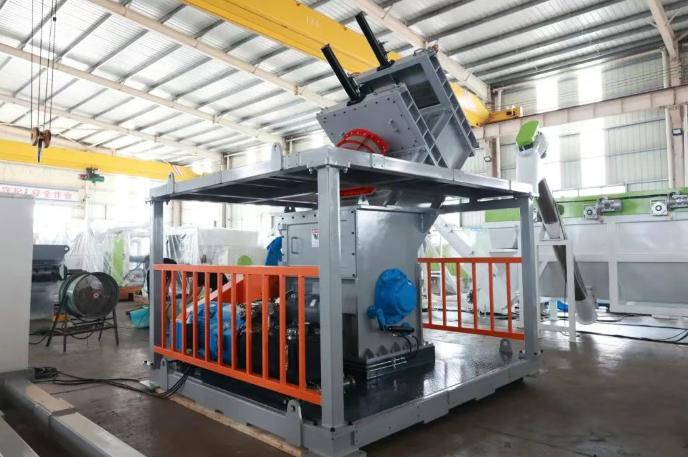March 28, 2025 – The recycled plastic industry is undergoing a “high-value” transformation, driven by the global “dual carbon” goals and the need to combat plastic pollution. Traditionally low-end recycled materials are finding new applications, expanding from daily chemical packaging to automotive components, and from electronic products to high-end textile fabrics. Through technological innovation and design, recycled plastics are reshaping the value system of the circular economy. Here are the five innovative trends leading the industry towards a higher level of sustainable development.

Firstly, the integration of recycled plastics with aesthetic design is breaking the boundaries of application scenarios and reshaping value logic. Covestro, leveraging big data and consumer insights, has developed unique visual and tactile designs for recycled plastics, enabling brands to showcase their environmental commitment. Its recycled plastic products, featuring high strength and impact resistance, are already used in high-end consumer goods structural parts. Arkema’s 100% bio-based Rilsan® PA11 outdoor clothing fabric, not only recyclable but also offering excellent performance, has gained favor among luxury brands. Remo Environmental’s food-grade R-PP has broken through the technological barriers of polyolefin recycling, with performance approaching that of virgin materials, and is widely used in toys, automobiles, and other high-end fields.
Secondly, innovations in chemical recycling processes are overcoming high energy consumption bottlenecks and promoting large-scale development. Japan Steel Works’ twin-screw extruder continuously decomposes plastics through screw shear heat, achieving high-purity monomer recovery. Wanrong Technology’s pyrolysis equipment, utilizing flexible sealing and ultra-low emission technologies, converts waste plastics into valuable products. Donggeng Chemical’s cyclonic crystallizer purifies high-purity materials with ultra-low energy consumption, enabling large-scale continuous production. These technological innovations significantly enhance the efficiency of chemical recycling, reduce operating costs, and accelerate the industrialization process.
According to Color Masterbatch Industry Network, polylactic acid (PLA) closed-loop recycling technology is addressing the “recycling shortage” of bio-based materials. Guanghua Weiye’s “X-type” closed-loop technology converts PLA waste into high value-added products, with a resource utilization rate exceeding 95%. Using recycled materials to produce PLA significantly reduces carbon emissions, promoting the true circular use of bio-based materials. This technology is expected to resolve the industry pain point of low PLA recycling rates and activate the bio-based market.
Furthermore, biological enzymatic PET recycling technology is ushering in a new era of “mild and efficient” PET recycling. Genetically engineered PET-degrading enzymes can depolymerize waste into monomers under normal temperature and pressure, which can then be repolymerized into food-grade rbPET. This process is infinitely recyclable, allowing regenerated PET to be reused multiple times across various fields without performance loss. Biological enzymatic methods are energy-efficient and pollution-free, poised to become the mainstream path for PET recycling.
Lastly, mechanical recycling, through intelligent and refined upgrades, has overcome the bottleneck of performance degradation. Shuangshi’s sorting system utilizes ultra-clear CCD cameras and metal detection technology to sort multiple polymers, with an impurity removal rate exceeding 99%. Esrite’s PET bottle-to-bottle system, certified by the FDA, maintains grade from sorting to pelletizing, allowing recycled PET to be directly used in food packaging. Dayun Environmental’s lithium-ion battery oxygen-free shredding system efficiently processes various types of lithium-ion batteries and waste.
Conclusion: High-value recycled plastics are leading the future direction of material development. From “waste” to “premium products,” the five innovative trends in recycled plastics not only provide technical support for environmental protection but also open up a high-end application market worth billions. With policy promotion and growing green consumer demand, those who seize the high ground of high-value technology will lead the wave of the circular economy in the next decade.














